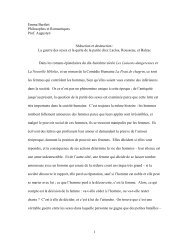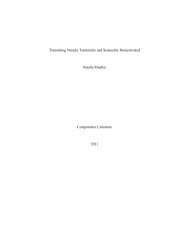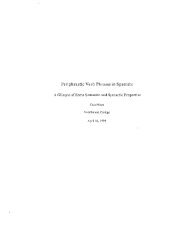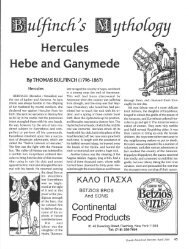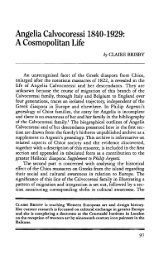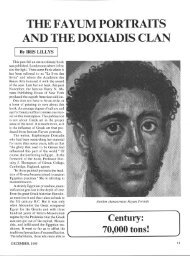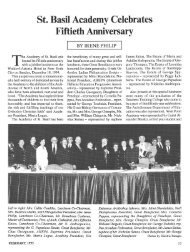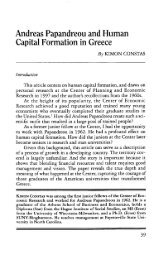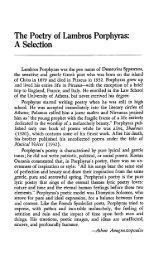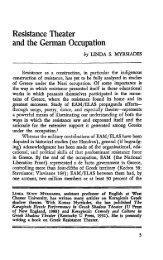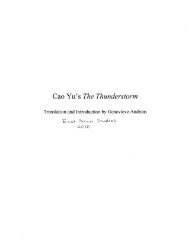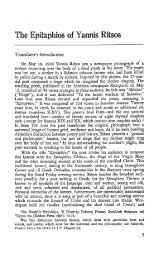Mythistorema - Triceratops Home
Mythistorema - Triceratops Home
Mythistorema - Triceratops Home
You also want an ePaper? Increase the reach of your titles
YUMPU automatically turns print PDFs into web optimized ePapers that Google loves.
28 JOURNAL OP Tilt iltLLENIC DIASPORA<br />
of its poems, but also because there is in it an explicit identification of<br />
the journey with love.<br />
As the epigraph of <strong>Mythistorema</strong>, Seferis uses two lines from Rimbaud:<br />
"Si j'ai du goat, ce n'est guêres/Que pour la terre et les pierres." 1<br />
The complex symbolic meaning of the stones, which appear very often in<br />
Seferis' poetry, will be explored further in connection with poems "20"<br />
and "21." One might say at this point, however, that although the stones<br />
imply the decline of the senses, they mainly represent the classical Greek<br />
tradition and the ideas of measure, balance and justice that are its rule.<br />
In his Journals, Seferis writes that if he had come across the following<br />
lines from T.S. Eliot's Four Quartets before writing <strong>Mythistorema</strong>, he<br />
would have used them as an epigraph for it:a<br />
. . . As we grow older<br />
The world becomes stranger the pattern more complicated<br />
Of dead and living. Not the intense moment<br />
Isolated with no before and after,<br />
But a lifetime burning in every moment<br />
And not the lifetime of one man only<br />
But of old stones that cannot be deciphered<br />
("East Coker")<br />
The use of this epigraph by Seferis would have implied that in <strong>Mythistorema</strong><br />
the experience of life and love becomes a tragic enigma, a tragic<br />
complication.<br />
Seferis had not read the Four Quartets at that time, but he had read<br />
Eliot's Waste Land and other early poems, induding "Marina." As he<br />
writes in a letter of tribute to the English poet, he first read Eliot in 1931.<br />
He started working on <strong>Mythistorema</strong> in 1933, and the Waste Land's<br />
influence on it is quite evident. 'While Seferis' Turning Point was written<br />
in rhyme and in a style suggesting the influence of the French Symbolists,<br />
<strong>Mythistorema</strong> is written in free verse, employing the modern techniques<br />
of Eliot and James Joyce. It is for this reason that <strong>Mythistorema</strong> is considered<br />
by many as the real "turning point" not only in Seferis' own<br />
poetic development but in Greek poetry in general, because it marks the<br />
introduction of these modern techniques into Greek letters.<br />
The title of the sequence already implies the use of what Eliot, in his<br />
essay on Joyce, terms the "mythical method." <strong>Mythistorema</strong> {Maar&<br />
pv,a1 is a modern Greek word which, literally translated, means<br />
1From the poem "Fetes de la Faim," reproduced in Une Saison en Enter.<br />
aGeorge Seferis, Mem [Days), 5 vols. (Athens: Ikaros, 1977) E, 59. Only<br />
one volume of this series of diaries has been translated into English, under the title<br />
A Poet's Journal: Days of 1945-1951, tr. Athan Anagnostopoulos (Cambridge,<br />
Mass.: Harvard University Press, 1974). The Greek series will be referred to<br />
hereafter as Journal A, Journal B, etc.



